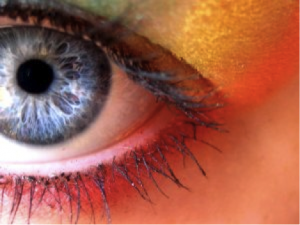 Eye contact can make or break your sales effectiveness.
Eye contact can make or break your sales effectiveness.
I smile and look people in the eye —whether I’m walking on the bike path in my tennies or on the way to a business meeting. It makes my day when people look at me and smile back. We’ve made a connection, even though I don’t know them.
This approach works almost every time, except with people who are looking down at their phones, more focused on their tech than the people around them. They are in their own little world, oblivious to anyone or anything that doesn’t appear on the little screen right in front of them.
I don’t take it personally, but it still irks me that, in a world full of real, live people, we willingly put on digital blinders. I didn’t know why it annoyed me so much until I found research supporting the emotional and social relevance of eye contact.
Here’s Looking at You, Kid
Kate Murphy’s New York Times article—“Psst. Look Over Here”—summarizes both the key benefits of eye contact, and the serious consequences of not looking at other people:
Studies show that newborns, even with their blurry infant vision, instinctively lock eyes with their caregivers. Those who don’t (because of disposition or perhaps deprivation) are at greater risk for later diagnoses of neural and brain disorders such as autism and schizophrenia.
Researchers have also found that children and adults who avoid or are denied eye contact are more likely to suffer from depression and feelings of isolation as well as exhibit antisocial traits such as callousness. Rather than cause and effect, the hypothesis is that the relationship between less eye contact and psychological problems is circular and reinforcing. This is alarming in a society where people increasingly spend more time looking at their mobile devices than at one another. (Read the rest of the article.)
Murphy is absolutely right. If we’re too busy staring at screens to look at the people in front of us, that’s a problem—especially for salespeople, whose careers depend on the ability to build and maintain relationships with clients and Referral Sources.
Look Your Clients in the Eye Already
In fact, there are proven links between eye contact and increasing sales activity. As Murphy writes:
In a study published last month in the journal Environment and Behavior, researchers at Cornell University manipulated the gaze of the cartoon rabbit on Trix cereal boxes and found that adult subjects were more likely to choose Trix over competing brands if the rabbit was looking at them rather than away. In a creepy corollary, the researchers found that the eyes of characters on boxes of cereal marketed to kids were directed downward, and can meet the upward gaze of children in grocery store aisles. (Read the rest of the article.)
Eye contact is critical for salespeople. Whether you’re meeting with clients in person, having a video conference, or even posting photos on social media, let people see the whites of your eyes.
[Tweet “Eye contact and a warm smile is the way to start.”]
The key to sales is making connections that count. Eye contact and a warm smile is the best way to start.
Connect with No More Cold Calling
Follow Joanne on Google+ or Twitter @ReferralSales, or connect on LinkedIn and Facebook.
Comment Here
How do you feel about people who refuse to make eye contact?

Joanne, do you think people are unaware of how “staying connected” disconnects a gaze into someone’s eyes? The absence of eye contact, that intimate moment of connection, concerns me. I wonder if people will wake up from the technology fog one day and realize what they’ve been missing. Thanks for writing in such a positive way. Gary